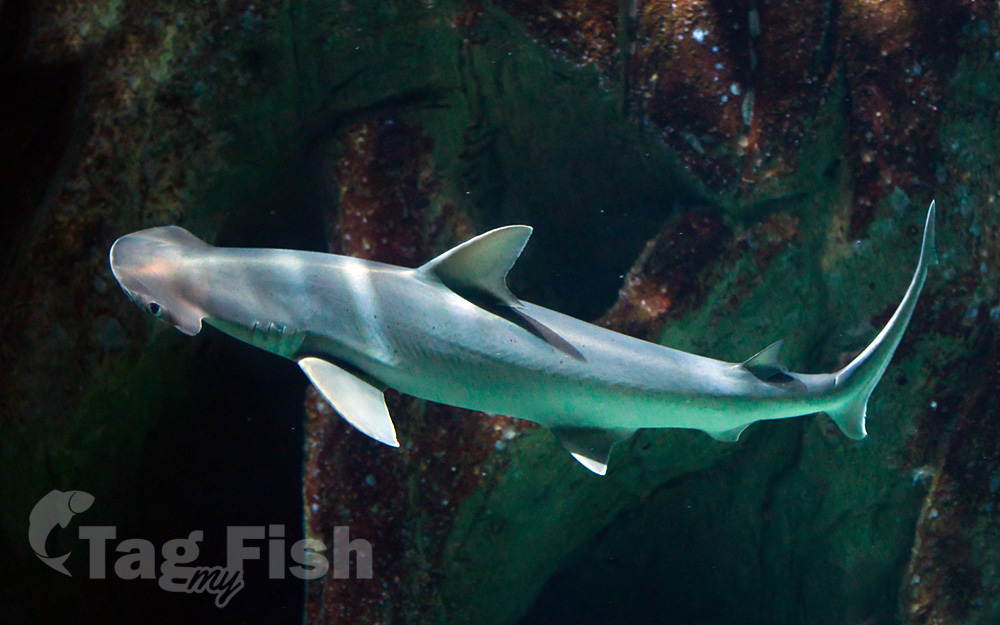Bonnethead shark
(Sphyrna tiburo)

Classification
General data
The bonnethead (Sphyrna tiburo), also called a bonnet shark or shovelhead, is a small member of the hammerhead shark genus Sphyrna, and part of the family Sphyrnidae. It is an abundant species in the littoral zone of the North Atlantic and the Gulf of Mexico, is the only shark species known to display sexual dimorphism in the morphology of the head, and is the only shark species known to be omnivorous.
Description
The shark is characterized by a broad, smooth, spade-like head: it has the smallest cephalofoil (hammerhead) of all Sphyrna species. The body is grey-brown above and lighter on the underside.
Typically, bonnethead sharks are about 80–90 cm (2.6–3.0 ft) long, with a maximum size of about 150 cm (4.9 ft).
Distribution and habitat
This species occurs on both sides of the American coast, in regions where the water is usually warmer than 70 °F (21 °C). In the Atlantic, it ranges from New England, where it is rare, to the Gulf of Mexico and Brazil, and in the Pacific it ranges from southern California to northern Peru. During the summer, it is common in the inshore waters of the Carolinas and Georgia; in spring, summer, and fall, it is found off Florida and in the Gulf of Mexico. In the winter, the bonnethead shark is found closer to the equator, where the water is warmer. While it is still abundant in the North Atlantic Ocean and Gulf of Mexico, it has become significantly less common in the Caribbean Sea, and has been nearly extirpated from most of its South Atlantic and Pacific range.
It frequents shallow estuaries and bays over seagrass, mud, and sandy bottoms.












